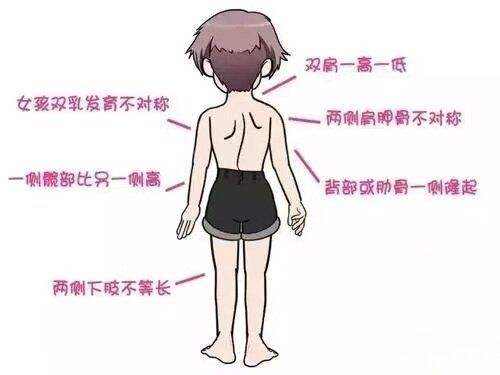
1. Posture Assessment
Parents should pay attention to adolescent scoliosis! When children are bathing or changing clothes, you can observe their physical development.
For example, the appearance

In simple terms, you can observe whether the child's neck, breasts, shoulders, ribs, waist, and hips are symmetrical in an upright position! You can also use the Adam Sign flexion test to check.

When flexing forward, the apex of the kyphosis of the spine and the asymmetry of the trunk are most obvious at the apex of the main arc, and the height of the bulge reflects the degree of rotation of the vertebral body in the apical segment.
If the spinal problem is caused by pelvic tilt or unequal length of lower limbs, the ADAM test can be performed by raising the lower limbs/sitting in a sitting position.
In addition to body analysis, it is also important to collect medical history, including the time of onset of scoliosis, the progression of scoliosis, family history, etc.
II. Radiological evaluation
After the posture analysis, we need to further use imaging examinations to help us better determine the degree of scoliosis.
Standard standing full-spine X-rays, frontal and lateral views, can help us analyze the Cobb angle and rotation angle of scoliosis.

Usually at this time, the doctor will judge the scoliosis of your child based on the Cobb angle and rotation angle of your scoliosis, and recommend the method of intervention or treatment.
Important points to emphasize:
There are two reasons why scoliosis needs to be intervened: 1. To reduce the degree of scoliosis, improve the appearance of the body, and reduce the harm of scoliosis to the human body. 2. Scoliosis is often progressive. If it is not intervened, the probability of the angle of scoliosis getting worse is very high.
Source: www.tzjk.com